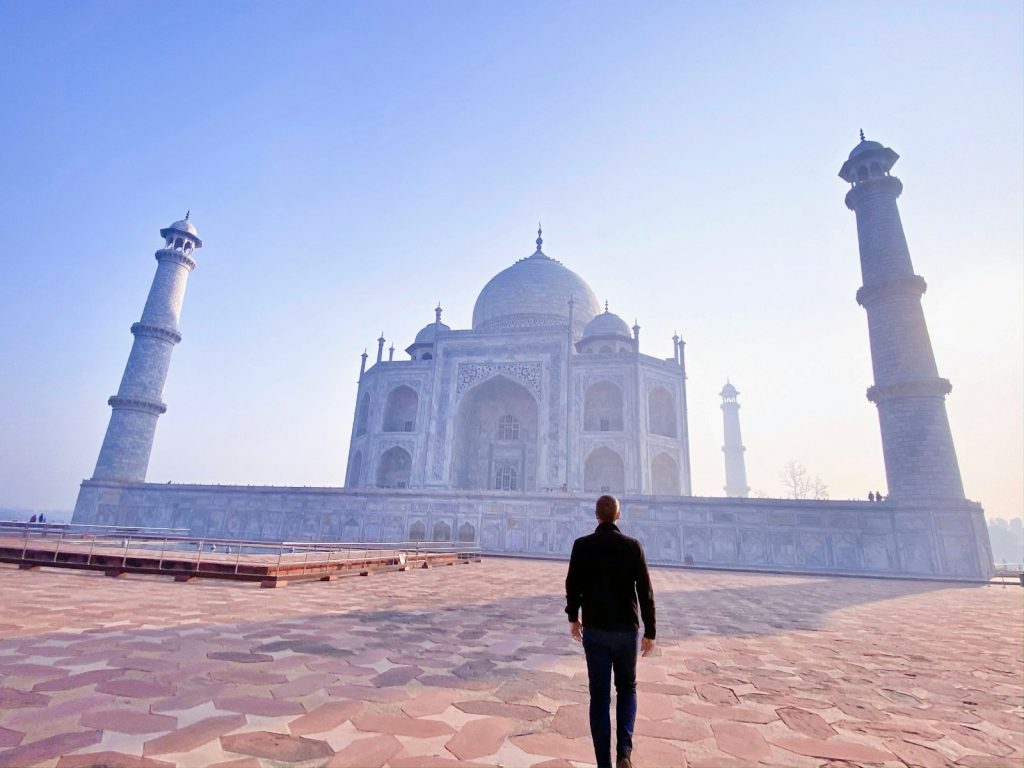Journey Through Time: History has left its indelible mark on the world, shaping cultures, societies, and landscapes. From ancient ruins to majestic monuments, historical landmarks offer a glimpse into the past, allowing us to connect with bygone eras and understand the evolution of civilizations. In this article, we embark on a virtual journey to explore 10 remarkable historical landmarks from different corners of the globe, each with its own unique story to tell.
1. The Great Wall of China:
Stretching over 13,000 miles across China’s northern frontier, the Great Wall stands as a testament to the ingenuity and perseverance of ancient civilizations. Built over several centuries to defend against invasions, this colossal structure offers breathtaking views of rugged landscapes and rolling hills. Visitors can explore various sections, each with its own architectural features and historical significance, making it one of the most iconic and awe-inspiring landmarks in the world.
2. The Pyramids of Giza, Egypt:
As one of the Seven Wonders of the Ancient World, the Pyramids of Giza never fail to captivate the imagination. Built over 4,500 years ago as tombs for the pharaohs, these monumental structures continue to puzzle archaeologists and inspire wonder with their precision engineering and grandeur. Standing in the shadow of the towering pyramids, visitors can marvel at the craftsmanship of ancient Egyptians and ponder the mysteries surrounding their construction.

3. Machu Picchu, Peru:
Perched high in the Andes Mountains, Machu Picchu is a testament to the architectural prowess of the Inca civilization. This ancient citadel, hidden amidst mist-shrouded peaks, served as a sacred site and urban center for the Inca rulers. Today, visitors can wander through its labyrinthine streets, marvel at the precision-cut stone buildings, and soak in panoramic views of the surrounding valleys. Machu Picchu’s enigmatic charm and remote location make it a must-visit destination for history enthusiasts and adventurers alike.
4. The Colosseum, Italy:
A symbol of ancient Rome’s grandeur and brutality, the Colosseum stands as the largest amphitheater ever built. Completed in 80 AD, this architectural marvel could accommodate up to 80,000 spectators who gathered to witness gladiatorial contests, mock naval battles, and other spectacles. Despite centuries of neglect and damage, the Colosseum remains an iconic symbol of Roman engineering and a poignant reminder of the city’s turbulent past. Today, visitors can explore its labyrinthine corridors, marvel at its towering arches, and imagine the roar of the crowds that once filled its stands.
5. The Taj Mahal, India:
Regarded as one of the most exquisite monuments ever built, the Taj Mahal stands as a testament to eternal love and exquisite craftsmanship. Commissioned by the Mughal emperor Shah Jahan in the 17th century as a mausoleum for his beloved wife, Mumtaz Mahal, this white marble masterpiece is renowned for its symmetrical beauty and intricate carvings. Set against the backdrop of lush gardens and reflecting pools, the Taj Mahal inspires awe and reverence in all who behold its splendor, making it a UNESCO World Heritage Site and a symbol of India’s rich cultural heritage.

6. Petra, Jordan:
Nestled amidst the rugged desert terrain of Jordan, Petra is an ancient city carved into rose-colored cliffs by the Nabataeans over 2,000 years ago. Once a bustling trade hub and capital of the Nabataean Kingdom, Petra’s breathtaking architecture and rock-cut tombs continue to enchant visitors from around the world. Highlights include the iconic Treasury, the Monastery, and the Royal Tombs, each bearing witness to Petra’s storied past and enduring legacy as one of the Middle East’s most remarkable archaeological sites.
7. The Acropolis of Athens, Greece:
Perched high above the city of Athens, the Acropolis stands as a symbol of ancient Greece’s cultural and architectural achievements. Home to iconic structures such as the Parthenon, the Erechtheion, and the Temple of Athena Nike, this ancient citadel served as the spiritual and political heart of classical Athens. Today, visitors can wander through its marble ruins, admire the intricate carvings and sculptures, and soak in panoramic views of the city below, gaining insight into the birthplace of democracy and Western civilization.
8. Angkor Wat, Cambodia:
Enveloped by lush jungles and serene moats, Angkor Wat is the largest religious monument in the world and a masterpiece of Khmer architecture. Built in the 12th century as a Hindu temple dedicated to the god Vishnu and later transformed into a Buddhist site, Angkor Wat is a symbol of Cambodia’s rich cultural heritage and spiritual traditions. Visitors can explore its intricate bas-reliefs, towering spires, and tranquil courtyards, marveling at the ingenuity of the Khmer Empire and the enduring beauty of this architectural marvel.
9. The Alhambra, Spain:
Perched atop a hill overlooking the city of Granada, the Alhambra is a stunning example of Moorish architecture and a testament to Spain’s multicultural heritage. Built during the 13th and 14th centuries by the Nasrid emirs, this sprawling palace complex features intricately carved stucco, vibrant tilework, and lush gardens, creating an atmosphere of ethereal beauty and tranquility. Visitors can wander through its opulent halls, stroll through fragrant gardens, and admire panoramic views of the surrounding countryside, immersing themselves in the splendor of Al-Andalus and its enduring legacy.

10. Stonehenge, United Kingdom:
Standing in silent splendor on the windswept Salisbury Plain, Stonehenge is one of the world’s most iconic prehistoric monuments. Dating back over 4,000 years, this mysterious stone circle continues to intrigue and mystify archaeologists and visitors alike. While its exact purpose remains shrouded in mystery, Stonehenge’s enigmatic presence and astronomical alignments suggest that it served as a sacred site for ancient rituals and ceremonies. Today, visitors can marvel at its massive sarsen stones, ponder its significance, and contemplate the mysteries of the distant past.
Journey Through Time:
In Conclusion, From the ancient wonders of Egypt and China to the medieval splendor of Europe and the mystical allure of Southeast Asia, the world is replete with historical landmarks that offer a window into the past. Whether exploring the ruins of ancient civilizations, marveling at architectural masterpieces, or contemplating the mysteries of the cosmos, these landmarks inspire wonder, awe, and a deeper appreciation for the rich tapestry of human history. As we journey through time, let us cherish and preserve these remarkable treasures for future generations to discover and explore.


